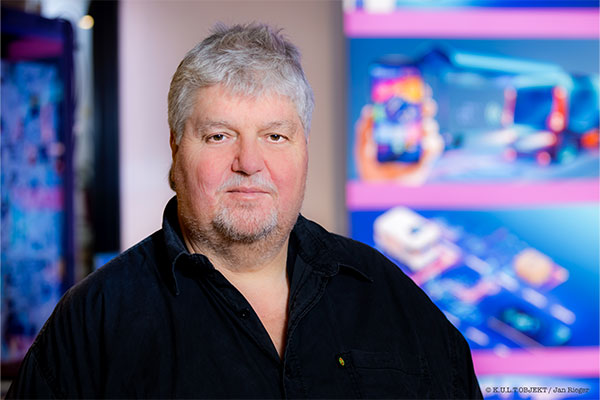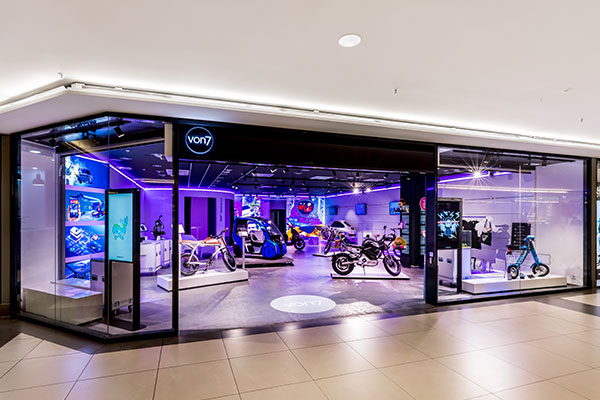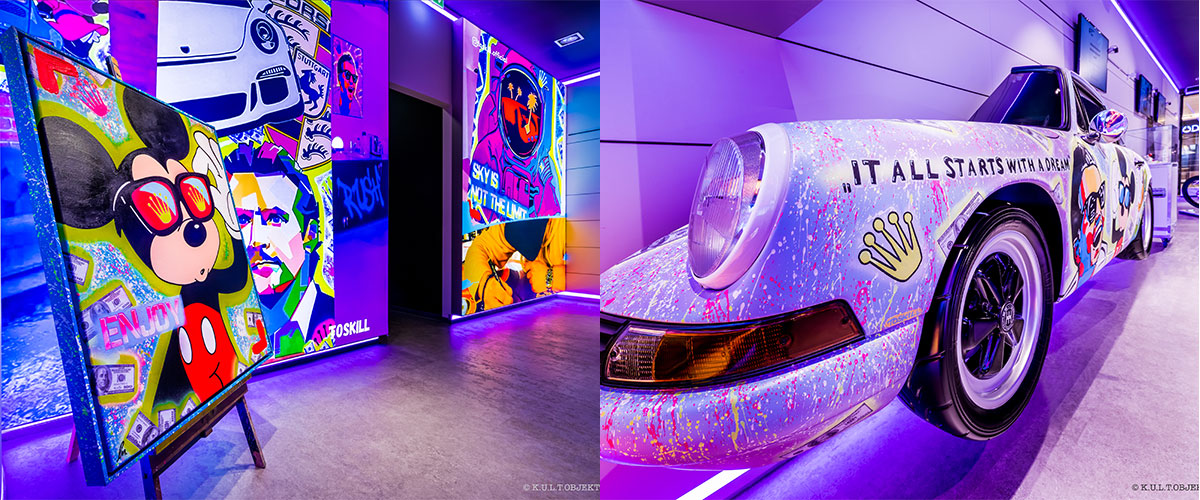By Jens Fischer
UX, the digital world-based user experience, is being transferred to the physical world with growing enthusiasm. However, there appears to be some kind of translation problem. While it comes across as cool and contemporary online, it often appears to be cumbersome and not very modern in the analog world.
Parallels can be seen in marketing: Brand and product campaigns are now completely geared toward e-commerce and digital media. The fact that only snapshots – as fleeting as soap bubbles – are ever produced, especially on social media channels, is often brushed aside. Since new bubbles have to be produced at a very fast pace, as much money is now being spent on influencers as was once spent on Hollywood testimonials. Marketing budgets for brick-and-mortar stores, on the other hand, continue to shrink.
Stores Require Different Approaches
The fixation on digital standards as the last resort, to which brick-and-mortar retail must also submit, disregards the fact that the physical world is governed by completely different laws. Our digital tunnel vision is preventing us from taking advantage of the opportunities offered by such laws. However, those who appeal to city centers, shopping centers, manufacturers, and brands to reinvent the physical shopping landscapes must also recognize their character and advantages and consciously and specifically highlight them. Anything else would be half-hearted and would be unlikely to achieve the goal of saving retail and shopping centers.
The three principles of e-commerce are speed, availability, and value for money. In the midst of the discussion about the new retail environment and the future positioning of shopping centers, we run the risk of trying to transfer these principles on a one-to-one basis to brick-and-mortar stores. However, anyone who expects to be able to fuel the user experience at shopping centers in the future via a patchwork of pick-up stations and gastro-miles is mistaken. Customers, retailers, operators, and investors would certainly not be happy with such an approach.
“Make-up” Is Not Enough
In response to the transformation, many center operators are currently investing a lot of money in refurbishment. Modernization is great first step, but that is all it is – modernization. It does nothing to change the essence, the offer, or the approach. Attempts to attract new prospects, for example, from the e-sports and gaming sectors, to vacant spaces are bearing fruit here and there. Such highlights, however, are highly specific in terms of their appeal. The tenants are, by and large, still the same, and in some cases, they are interchangeable brands whose ambition remains the same: to grab their piece of the sales pie by means of additional – albeit often smaller – stores. At the same time, however, they are pumping their marketing power and budgets into their B2C business and not into emotional proximity to customers on the shop floor. That approach is inconsistent and is unlikely to be successful in the long term.

In the long term, the mere satisfaction of needs, in other words, the “procurement” and “quick pick-up” of goods, will not be a sufficient justification for the existence of shopping centers as a means of mobilizing customers.
The physical world thrives on encounters, atmosphere, surprise, variety, and experiences. A shopping center’s capital lies in the desire for inspiration, sensuality, social interaction, communication, and yes, even the desire for a slower pace in response to the increasingly fast-paced digital bombardment.Such insight is nothing new. Why, then, are we still doing so little about it? Why are we not taking advantage of the opportunities provided by visitor expectations?
The Shopping Center as an Emotional Touchpoint
The efforts of all stakeholders, tenants, and operators should be united around the goal of staging the shopping center as a large, walkable, emotional touchpoint.
Fundamentally speaking, a shopping center is nothing more than a replica of a shopping landscape within a small, functioning town, but concentrated and enclosed inside a shell. As such, centers are predestined to emulate intact urban store structures: By offering smaller retail formats, shorter space occupancy times, and low-threshold cost structures that also clear the way for independent local retailers, startups, and other exciting things, centers are in the position to create the first key prerequisites for such developments. In the summer, an ice cream parlor could be in operation; in the winter, an Italian grocer complete with a pizza counter could be opened. Next door, a completely digitalized convenience store, which also serves as a Click & Collect pick-up station and, in emergencies, stocks the two screws needed to hang up a picture at home, could be set up as well. There are a few crucial factors for success: short distances, local orientation, a relevant, lively segment mix, and store concepts designed for frequent, surprising changes with respect to assortment and sentiment.
That sums up the principle behind pop-up stores, only in a more sophisticated and digitally enhanced manner: Ideally, the operator of a retail space, in cooperation with brands and, if applicable, digital agencies, provides for changing thematic assortments, their physical and social media presentations, as well as their interlinking with the respective online stores via QR codes. For example: The theme of e-mobility might be played out for two months in one area, and electric cars, cargo bikes, and e-scooters might be offered for purchase, embedded within spatial staging.
Walking through such store spaces leaves a deep impression of a “better world”, for instance, via a mixture of virtual or digital installations with physical live acts – a lot to touch, listen to, learn about, and explore. Everything is accentuated by scent and sound. Additional rousing presentations of the topics of the future would also be conceivable, perhaps in the form of moving images or via live speakers, which could then be simultaneously streamed. In essence, such holistic, seamless (shopping) events would take on a different theme two months later – emotional, surprising input delivered in varying rhythms that would motivate customers to visit the center again and again.
Physical Brand Experience
Brand and chain store companies are also being called upon to physically expand their focus on digital channels. In and of itself, it is, after all, an appealing task for corporate marketing teams and retailers to physically stage their own brands, products, and messages for customers in a way that is highly experiential: Taking digital brand staging and e-shopping to the shop floor, coupled with the tools of visual merchandising, which activate all the senses, can lead to truly innovative experiences. Multichannel staging should be seamless to ensure that the brick-and-mortar space also benefits, thereby enhancing the UX, or rather the experience, at the center.

The aim is to make “brand experience” spatially tangible and to provide center visitors with surprising and emotional experiences. Such an example could be found in a “Henkel Experience World”, in which the sustainability strategy is presented in a way that can be experienced emotionally. That would allow visitors to personally experience the old white giant as a cool advocate of an environmentally friendly lifestyle. Another option would be to present the Harley-Davidson community outside its secluded niches, on a shopping center floor – a perfect surprise for center visitors. Ideas, themes, and inspirations abound.
Head of Events
It is clear to see: The success of Shopping Center 2.0 greatly depends on its staging power, as well as on well-executed event management that links the digital and the physical worlds in a creative, innovative, and effective way. However, the staffing structures of center operations reveal a gap in that regard: a facility manager, a controller, a center manager and some clerks are on site, whereas owners and/or investors are geographically and substantively distant. As a rule, no single member of a center team is anywhere near competent enough to assess shopping centers and tenants on the basis of the parameters of staging, customer experience, and emotion per square meter, let alone to plan and think ahead. Whenever an event is on the horizon, such as Easter or Christmas, an external agency is commissioned with the design – by a committee of untrained decision-makers. As a result, the question of budget is the only focal point.
Shopping centers need a “Head of Storytelling”‘ or “Head of Events” on the management floor. An event manager with expertise in experience-driven shopping, retail, and event culture is needed – someone who is able to compile and orchestrate the exciting future-oriented approaches that are currently out there and to present new offers and innovative space formats in order to create a unique mix that will fascinate visitors. If done cleverly and professionally, the necessary investments could also be used more effectively and thus kept more manageable, all thanks to digital advancements.
Only through the use of holistic, consistent concepts that are based on experience and emotion will shopping centers be able to position themselves as emotional touchpoints for a broad customer base in the future, despite the digital shift in retailing, and take advantage of the huge opportunities offered by the market.






